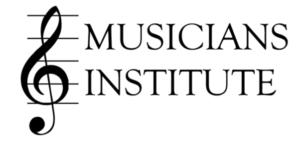
Playing Difficult Orchestrations
One of the greatest challenges facing church instrumental groups today is learning and playing difficult or poorly written music. In particular, accompaniments to some choir pieces may be beyond the abilty of some of our players. Some charts are written for professional players to record, not for volunteers players to play in a service. Publishers often make the orchestrations available as a service to churches. Of course that doesn’t make them any easier. The way some orchestrations are written set up our volunteer players to fail. Don’t expect the impossible. Some orchestrations need to be made more playable. That is our assignment.
Before Jumping In
Plan ahead. Begin rehearsing far enough in advance to get it ready. Depending on your group and schedule, some pieces may take several weeks of rehearsing. The urgency caused by too little rehearsal is frustrating and makes some otherwise learnable music a bite that is too big to swallow quickly.
Study the score. Look for:
Extreme tempos
Difficult keys
Extreme ranges
Complicated or poorly written rhythms
Balance problems with singers.
While comprehensive rehearsal techniques will be covered in subsequent articles, some foundation is helpful.
There are three kinds of mistakes that a director will face in rehearsal:
1. Fix it. The mistakes are major. There is a lack of understanding about notes, rhythms, articulations, dynamics, or style of the passage. The director needs to give instructions and rehearse to make the necessary improvements.
2. The mistakes will get better on their own. These are smaller mistakes – a wrong note here of there, an occasional key signature mistake, or slightly inaccurate rhythms. The next time you play it through, the mistakes will likely not recur. Directors must not waste time rehearsing this kind of mistake.
3. The mistakes will not get better. There are some aspects (range, rhythms, etc.) that are not currently possible. At the player’s current level, no amount of rehearsing can put the part in reach. This is when parts need to be edited.
Edit parts ahead of time. The best way is to rewrite parts before players see the originals. If players attempt parts that are not playable by them, it can foster frustration and a sense of failure. But when players know that their parts are being made playable, they are encouraged that their leader knows them and will do their best to help their players to succeed in their calling to play in orchestra with excellence. Directors need to remind their players that these adjustments are not due to the inability of any player, but because the parts were not written with our players in mind.
Passages with range issues can be taken down (or in some cases raised) by an octave. Sometimes chords can be inverted with a lower chord member in the top part – like revoicing the last chord for trumpets if the first part is out of reach.
Scale passages (runs) for woodwinds and strings can be omitted, leaving the remaining passages intact.
Fast, complicated passages can be edited, leaving out notes that are beyond the players ability to execute at performance tempo miles. Leave out out whatever notes or measures make the passage too difficult.
Some orchestrations contain complicated or poorly notated rhythms (called “licks”). If they are reasonable ability, they can be edited. Leave out faster or repeated notes.
In Rehearsal
The easiest musical element to adjust is tempo. Slowing the piece down makes many things easier. Learn difficult passages at a slow tempo, then gradually increase rehearsal tempo until performance tempo is attainable.
It is likely that difficult key signatures cannot be changed. In order to play in more challenging keys, players need to play the scales in those keys. Our orchestras begin rehearsals in my Instrumental Warm-Ups and Builders book or Church Orchestra Warm-Ups playing a scale in one of the tougher keys coming up later in the rehearsal. Over time and with repetition, groups can become quite adept at playing in any key (hopefully everyone in the same one).
When rehearsing players need to use their pencil and mark notes they tend to miss. This is vital to helps the results of rehearsal to carry over to the next time.
Often times difficult rhythms and licks can be learned. Separate the pitches from the rhythms. Doing the musical math, counting and clapping rhythms can improve the entire group, and of course help the lick get learned. Players learn to read the music rather than learn by rote or by listening to a recording. Recordings can be helpful, but they are no substitute for reading well.
As far as balancing instruments with vocal sound, the director must remind the players that there are 2 modes of playing:
1. When the voices are singing, the players must be able to hear the choir while they play, regardless of the demands of the part. Brass players need to not be pointing towards vocal mics. It is also helpful for trumpets especially to have some non reflective surface to blow into. players can use the air and energy necessary to play the part while keeping the volume level under control.
2. When voices are not singing (as in introductions and transitions) play the dynamics on the page.
Our Mission Possible
When we have players who are available and willing, we need to do all that we can to give them music to play. Difficult orchestrations can be made learnable, and with skilled rehearsal can be learned. Our assignment is not always easy, but the effort is more than worthwhile.
